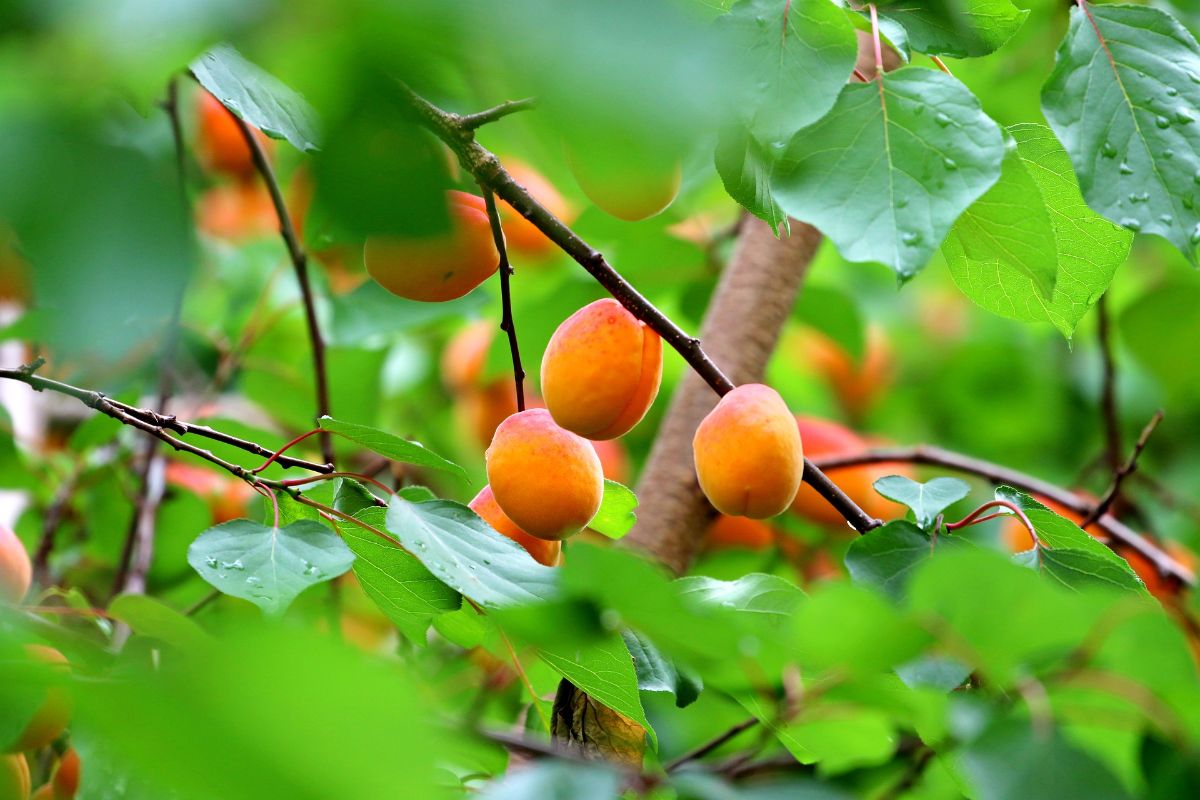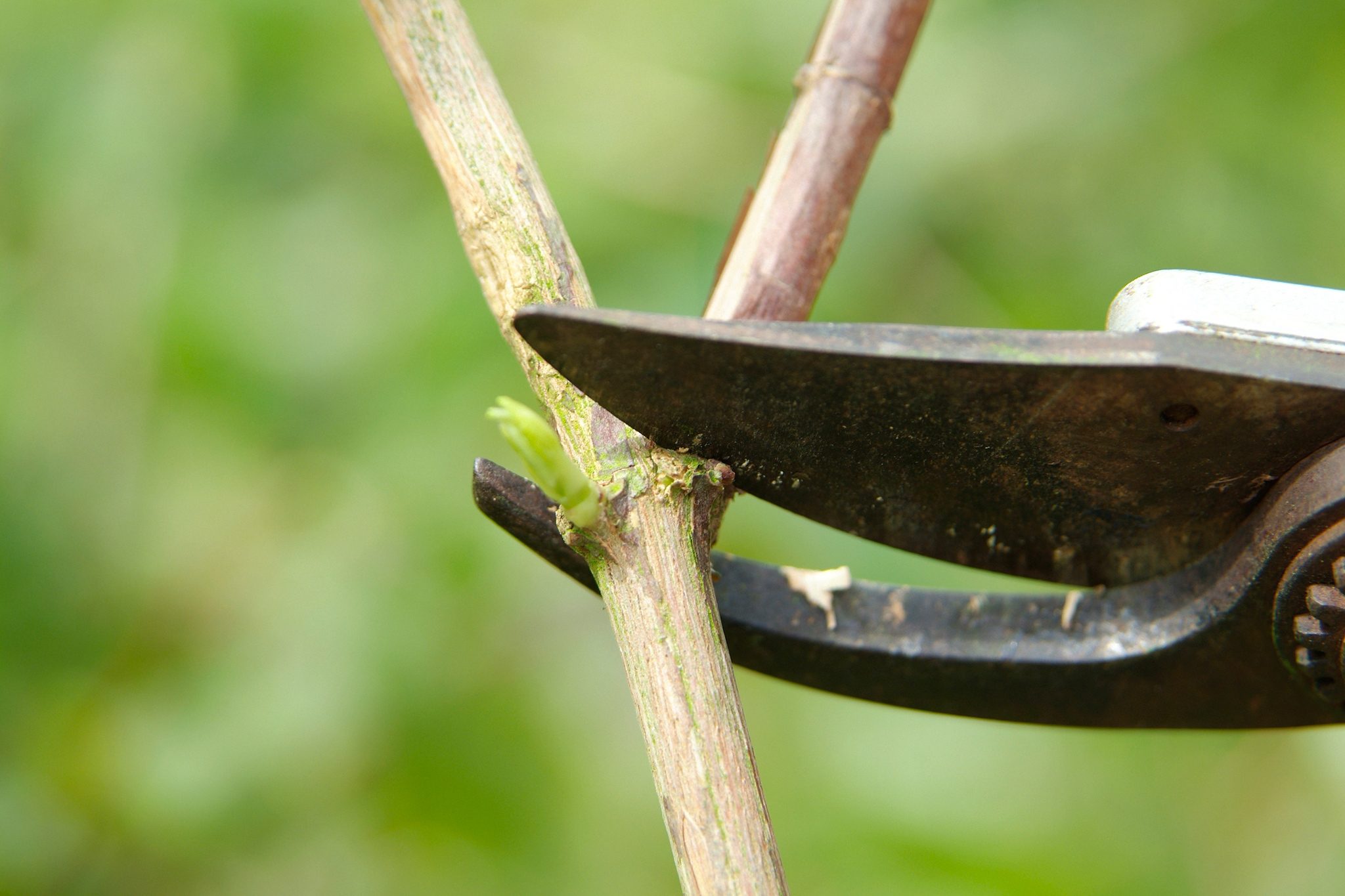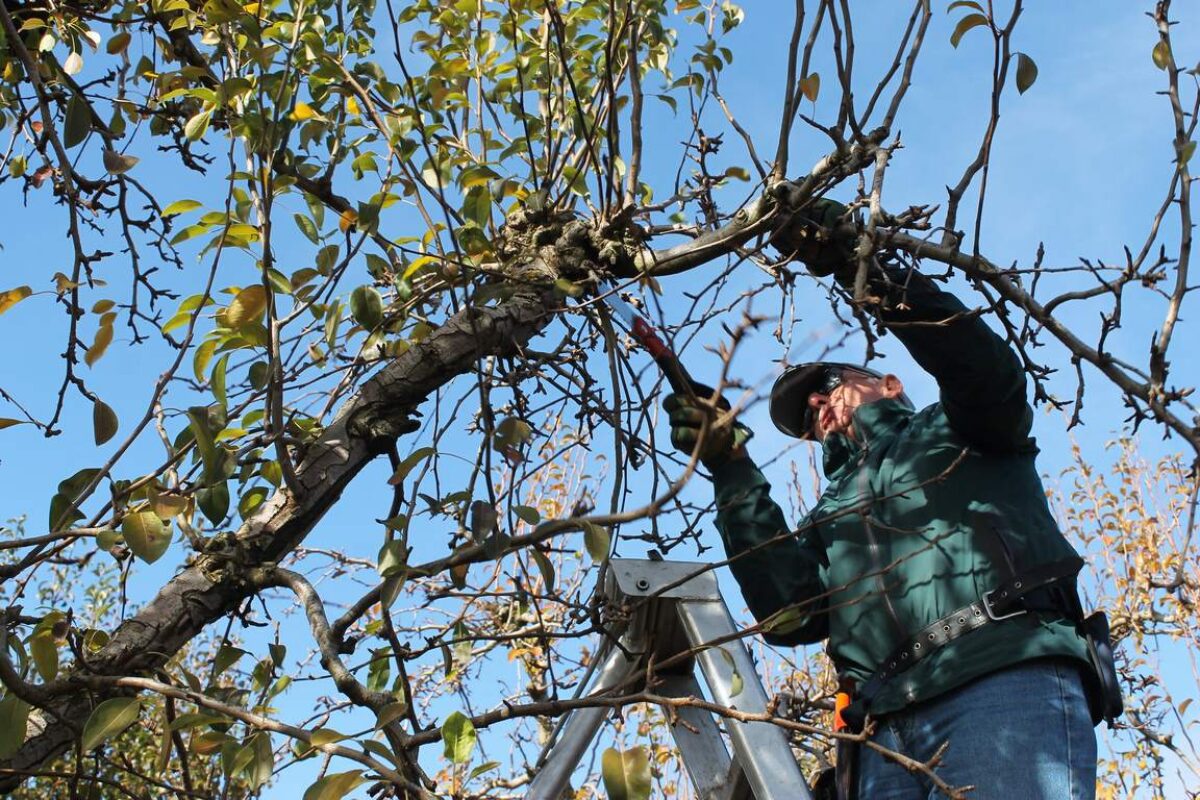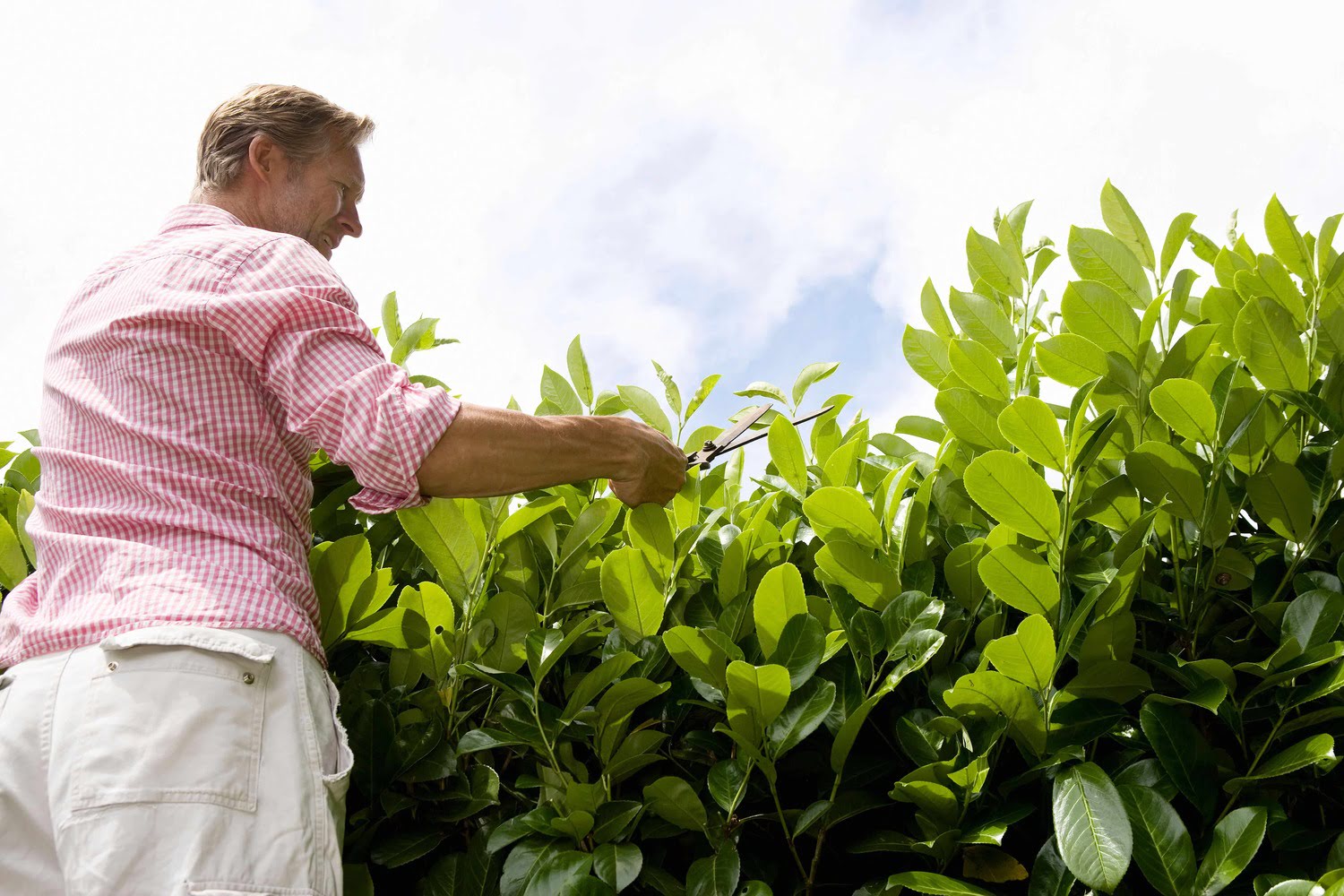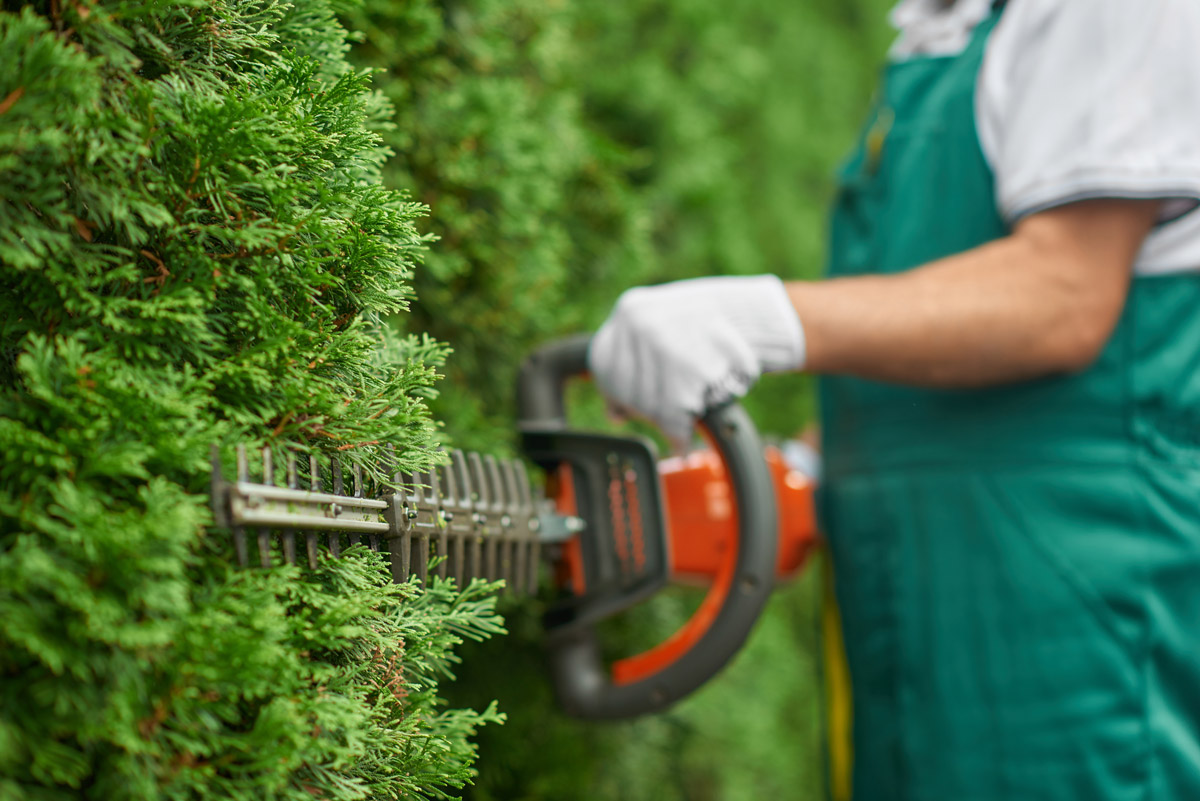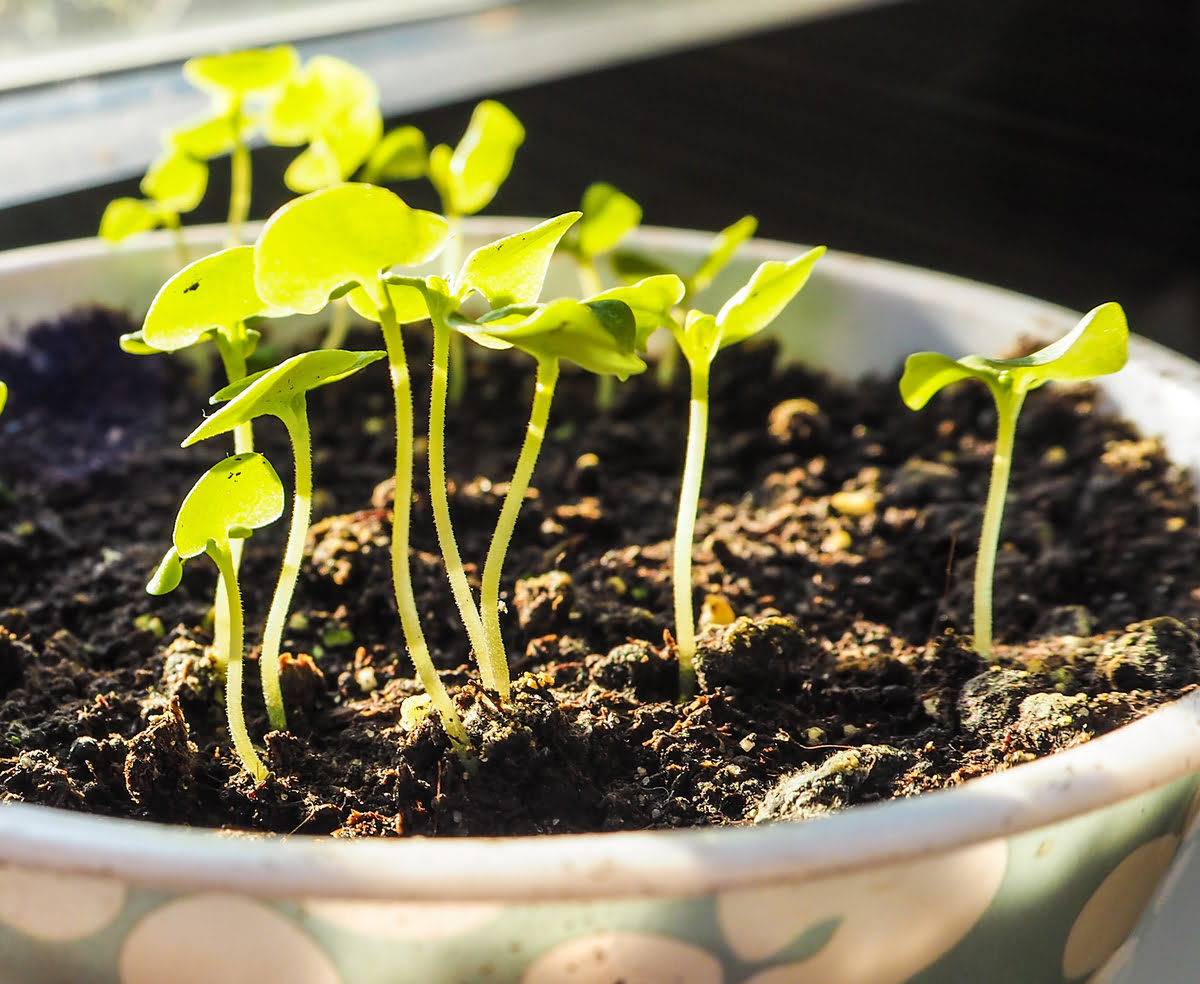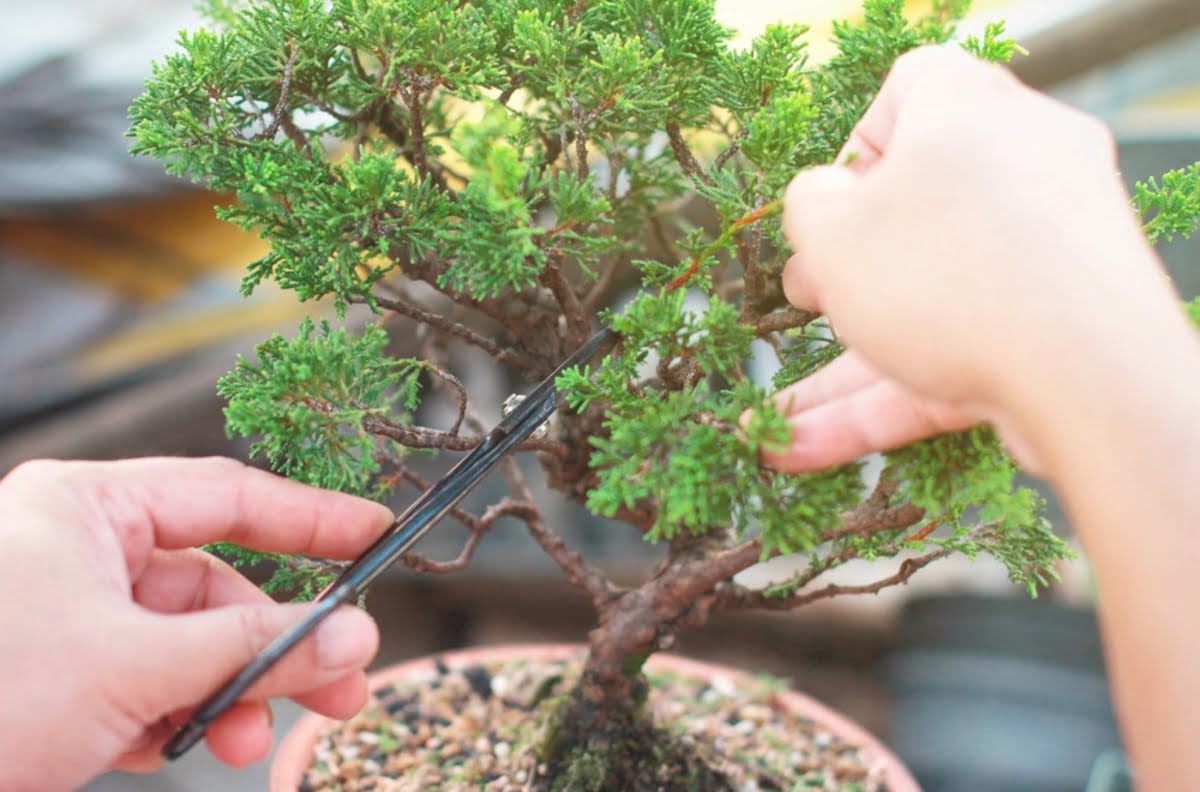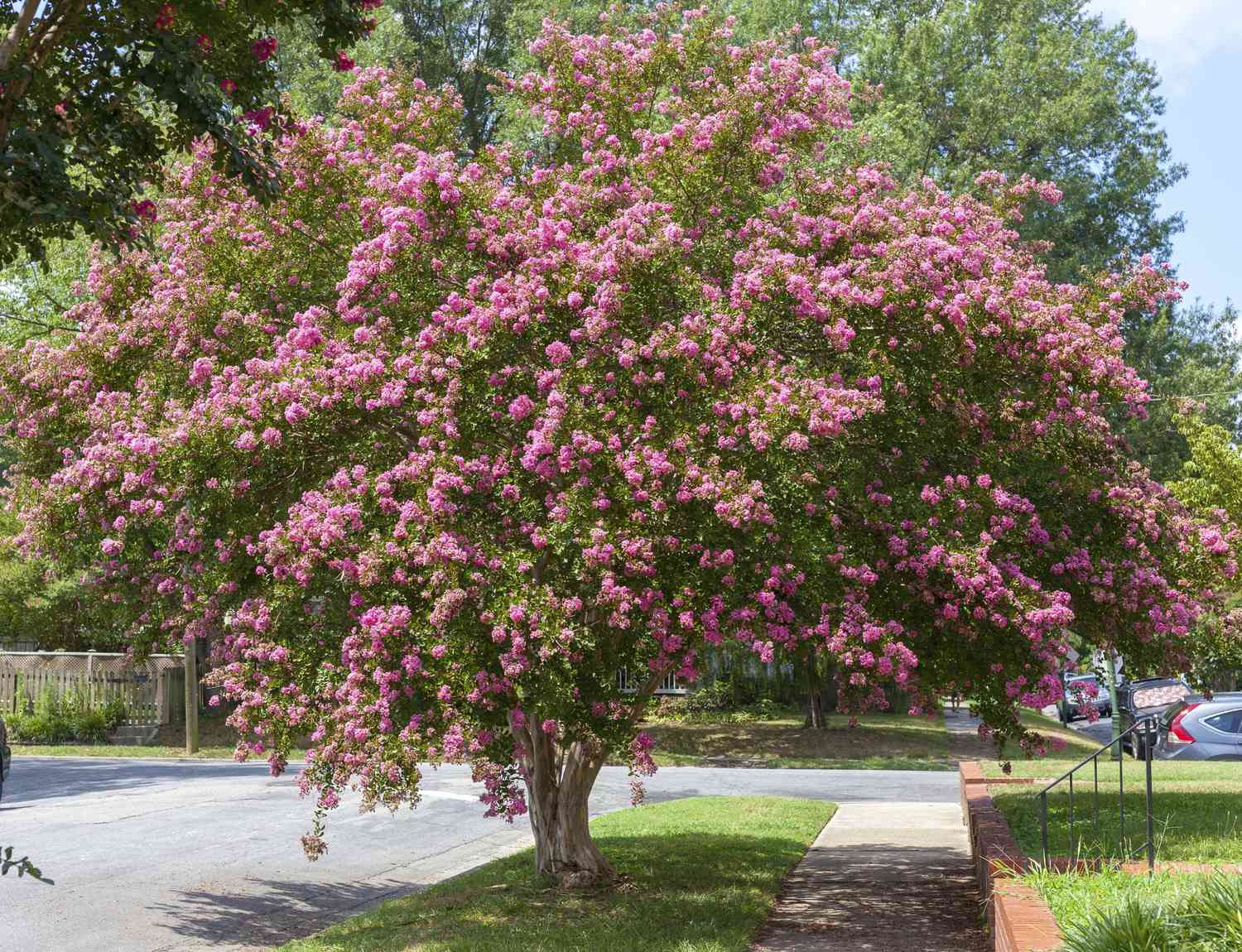Home>Gardening Techniques>Seasonal Gardening>When To Prune Lavender
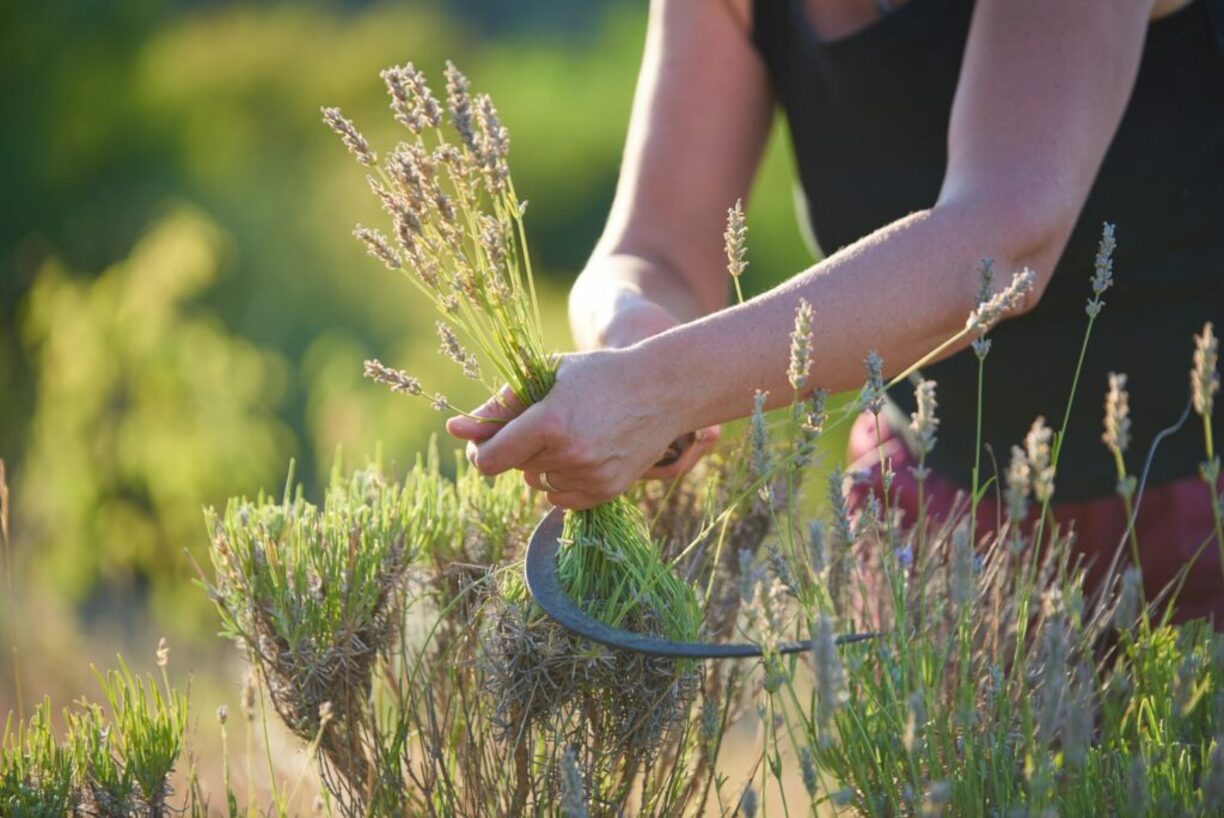

Seasonal Gardening
When To Prune Lavender
Modified: January 22, 2024
Learn when to prune lavender and other seasonal gardening tips to keep your garden thriving. Get expert advice on the best time to trim and maintain your lavender plants.
(Many of the links in this article redirect to a specific reviewed product. Your purchase of these products through affiliate links helps to generate commission for Chicagolandgardening.com, at no extra cost. Learn more)
Table of Contents
Introduction
Lavender is a beautiful and fragrant herb that is prized for its vibrant blooms and aromatic qualities. Whether you have a small backyard garden or a sprawling landscape, incorporating lavender plants can add a touch of beauty and tranquility to any space. However, to ensure that your lavender plants thrive and continue to produce an abundance of flowers year after year, it is essential to properly prune them.
Pruning lavender is a crucial task that helps maintain the health and longevity of the plants. By removing dead stems, shaping the plant, and encouraging new growth, pruning can promote better airflow, prevent diseases, and stimulate the production of more vibrant blooms. While it may seem intimidating at first, with the right techniques and tools, pruning lavender can be a rewarding and enjoyable experience.
In this comprehensive guide, we will explore the benefits of pruning lavender, how to identify when pruning is necessary, the tools required for the task, and a step-by-step guide to help you prune your lavender plants effectively. Additionally, we will provide tips to ensure that you avoid common mistakes and maximize the benefits of pruning.
By the end of this article, you will have the knowledge and confidence to prune your lavender plants like a pro. So, let’s dive in and discover the art of lavender pruning!
Benefits of Pruning Lavender
Pruning lavender is a crucial practice that offers several significant benefits for the overall health and vitality of your plants. Let’s explore some of the key advantages of pruning lavender:
- Promotes plant growth: Regular pruning helps stimulate new growth in lavender plants. By removing old and woody stems, you create space for fresh shoots to emerge, resulting in a fuller and more vigorous plant.
- Enhances flower production: Pruning lavender encourages the plant to focus its energy on producing more flowers. By cutting back spent blooms, you stimulate the development of new flower buds, leading to a more abundant and prolonged blooming period.
- Maintains plant shape and size: Lavender bushes can become sprawling and unruly if left unattended. Pruning allows you to maintain the desired shape and size of the plant, ensuring it fits harmoniously within your garden or landscape design.
- Improves airflow and prevents diseases: Dense foliage in lavender plants can hinder airflow, creating a conducive environment for fungal diseases. Pruning helps open up the plant and increase air circulation, reducing the risk of diseases such as powdery mildew.
- Increases sunlight exposure: Lavender thrives in full sun, and proper pruning can help ensure that each part of the plant receives adequate sunlight. This not only promotes optimal growth but also enhances the intensity of lavender’s signature fragrance.
- Allows for easier harvesting: Pruning lavender makes it easier to harvest the flowers for culinary, craft, or medicinal purposes. Well-pruned plants have more accessible stems, making it simpler to gather the fragrant blossoms without damaging the plant or losing precious essential oils.
- Prevents flopping and bending: As lavender plants grow, their stems can become long and heavy, leading to flopping and bending under their own weight. Pruning helps maintain strong and upright stems, preventing the plant from becoming unsightly and ensuring that it remains visually appealing.
These are just a few of the many benefits that pruning lavender offers. Whether you are growing lavender for its beauty, fragrance, or medicinal properties, regular pruning is essential for maintaining healthy, vibrant, and productive plants.
How to Identify When Lavender Needs Pruning
Pruning lavender at the right time is crucial for ensuring the health and vitality of your plants. While lavender is generally a low-maintenance herb, there are certain signs that indicate it is time to prune. Here are some key indicators to help you identify when lavender needs pruning:
- Woody and leggy stems: As lavender plants age, their stems become woody and less productive. If you notice that the majority of the stems have become thick and rigid, it is time to prune and rejuvenate the plant.
- Faded blooms: Lavender flowers gradually fade after blooming. Once the majority of the flowers on the plant have withered and lost their vibrant color, it is a sign that the plant is ready for pruning.
- Overgrown and untidy appearance: Lavender plants can quickly become unruly and overgrown, with stems sprawling in all directions. If your lavender has lost its neat and compact shape, it is a clear indication that it needs pruning to maintain its appearance and form.
- Reduced flowering: If your lavender has been producing fewer flowers than usual or has stopped blooming altogether, it is a sign that the plant needs pruning. Pruning helps stimulate new growth and encourages the development of more flowering shoots.
- Disease or pest infestation: If you notice signs of disease, such as yellowing leaves, wilting, or discoloration, or if your lavender plants are infested with pests, pruning can help control the spread of the problem and promote the plant’s recovery.
- Spring growth: In regions where lavender experiences a dormant period during winter, it is best to prune in early spring, just as new growth starts to emerge. This timing allows you to remove any dead or damaged stems and shape the plant before the start of the growing season.
- After flowering: If you live in an area with a milder climate where lavender may continue flowering throughout the year, it is best to wait until after the main flowering period to prune. This way, you can enjoy the blooms for a longer period before trimming the plant back.
By observing these signs, you can determine when your lavender plants require pruning. Remember to follow proper pruning techniques to ensure the best results and maintain the health and appearance of your lavender plants.
Tools Required for Pruning Lavender
Having the right tools for pruning lavender will not only make the task easier but also ensure that you achieve clean and precise cuts. Here are some essential tools you will need for pruning lavender:
- Pruning Shears: Also known as hand pruners or secateurs, these are a must-have tool for pruning lavender. Look for a pair of sharp, bypass pruning shears that will make clean cuts without crushing the stems.
- Loppers: Loppers are useful for cutting thicker, woody stems that may be too large for pruning shears. Choose a pair of bypass loppers with long handles to provide leverage and reach when trimming larger lavender branches.
- Hand Saw: In some cases, you may encounter very thick or stubborn lavender stems that require a hand saw for pruning. A small pruning saw or curved hand saw can be handy for these situations.
- Gardening Gloves: Lavender plants have a tendency to be prickly, so invest in a good pair of gardening gloves to protect your hands from thorns and spiky foliage. Opt for gloves made of durable material that allows for flexibility and dexterity.
- Clean and Sharp Pruning Tools: Before you start pruning, make sure your pruning tools are clean and sharp. Wipe the blades with disinfectant or rubbing alcohol to prevent the spread of diseases among plants, and sharpen the blades for precise and effective cuts.
- Container or Bag: Keep a container or bag nearby while pruning to collect the trimmed lavender stems. This will help keep your pruning area tidy and make it easier to dispose of the trimmings later.
- Pruning Sealant (Optional): Although not necessary, some gardeners prefer to apply a pruning sealant to freshly pruned lavender stems to promote healing and protect against insects and diseases. If you choose to use a sealant, make sure it is suitable for use on plants.
Having these essential tools on hand will set you up for success when it comes to pruning lavender. Remember to clean and maintain your tools regularly to keep them in optimal condition for future pruning tasks.
Step-by-Step Guide to Pruning Lavender
Pruning lavender may seem daunting at first, but with the right approach, it can be a straightforward and rewarding task. Follow this step-by-step guide to pruning lavender for healthy and beautiful plants:
- Choose the right time: Prune lavender in early spring or after the main flowering period, depending on your climate and the type of lavender you have.
- Inspect the plant: Take a close look at your lavender plant and identify any dead, damaged, or woody stems that need to be removed.
- Prepare your tools: Ensure your pruning shears or loppers are clean, sharp, and within reach. Put on your gardening gloves for protection.
- Begin pruning: Starting at the base of the plant, identify the oldest and thickest stems. Use your pruning shears or loppers to cut them back to about 1-2 inches above the woody growth.
- Trim spent blooms: Look for faded or spent flower stalks and trim them back to where they meet the main stem. This encourages new growth and prevents the plant from wasting energy on seed production.
- Shape the plant: For a neat and compact appearance, trim the remaining stems lightly to maintain the desired shape. Avoid cutting into the woody growth excessively.
- Remove dead foliage: Take this opportunity to remove any dead or yellowing leaves from the base of the plant. This improves airflow and reduces the risk of fungal diseases.
- Clean up: Gather the trimmed stems and dispose of them in a compost pile or green waste bin. Clean your pruning tools with disinfectant and store them properly.
- Water and fertilize: After pruning, give your lavender plants a thorough watering and apply a balanced, slow-release fertilizer to support new growth.
Remember to tailor the pruning process to the specific needs of your lavender variety. Some lavender varieties may require a more gentle touch, while others may benefit from a more extensive pruning. Observing the plant’s response and adjusting your technique accordingly will help you achieve the best results.
By following these step-by-step instructions, you will be able to confidently prune your lavender plants and promote their overall health, shape, and productivity.
Tips for Effective Lavender Pruning
Pruning lavender can be a simple and rewarding task, especially when you follow these helpful tips to ensure effective and successful pruning:
- Prune after the plant has established: It is best to wait until the second or third year after planting before you start pruning lavender. This allows the plant to establish a strong root system and ensures better recovery after pruning.
- Don’t be afraid to prune hard: Lavender is a resilient plant that can handle a significant pruning. Don’t hesitate to cut back woody stems and shape the plant to your desired size. Hard pruning promotes fresh growth and keeps the plant dense and healthy.
- Use sharp and clean tools: Dull pruning shears can crush the stems and make uneven cuts, leading to a higher risk of disease. Keep your pruning tools clean and sharp to ensure precise and clean cuts that promote quick healing.
- Focus on good air circulation: Lavender thrives in well-ventilated areas. When pruning, aim to create an open and airy shape, allowing for better air circulation around the plant. This helps prevent fungal diseases and keeps the foliage healthy.
- Leave some foliage at the base: When pruning, avoid cutting the lavender stems too close to the woody growth at the base. Leave a small amount of green foliage to protect the plant and promote new growth.
- Prune lavender at the right time: Timing is crucial when it comes to pruning lavender. Choose the appropriate time based on your climate and the specific variety of lavender you are growing. Pruning at the right time ensures the best results.
- Consider drying the pruned stems: Instead of discarding the pruned lavender stems, you can save them and dry them for use in potpourri, sachets, or homemade lavender products. Hang the trimmed stems upside down in a well-ventilated area to dry completely.
- Monitor the plant’s response: Observe how your lavender plant responds to pruning. If you notice any signs of stress or decline, adjust your pruning technique or timing accordingly. Each lavender variety may have slightly different pruning needs.
- Regularly maintain and prune: Lavender benefits from regular maintenance pruning throughout the growing season. Regularly trim spent blooms and light pruning can help maintain the shape of the lavender plant and promote continuous flowering.
By following these tips, you will become more confident and skilled in pruning lavender, leading to healthier, more vibrant plants that will reward you with a bountiful display of colorful blooms and aromatic fragrance.
Common Mistakes to Avoid While Pruning Lavender
Pruning lavender is a skill that can be mastered with practice, but it’s important to be aware of common mistakes that could hinder the health and growth of your plants. Avoiding these pitfalls will help ensure successful pruning and promote the long-term vitality of your lavender. Here are some common mistakes to avoid:
- Pruning too late in the season: Timing is crucial when it comes to lavender pruning. Avoid pruning too late in the season, as this can disrupt the plant’s growth cycle and reduce the chances of robust flowering the following year.
- Overpruning: While lavender can handle hard pruning, it is essential not to overdo it. Avoid cutting the plant back too severely, as this can weaken the lavender and impede its ability to recover and regrow.
- Pruning in humid conditions: Pruning lavender when the weather is humid or wet increases the risk of fungal diseases. It is best to choose a dry and sunny day for pruning to help prevent the spread of diseases.
- Not cleaning pruning tools: Failing to clean your pruning tools before and after pruning can contribute to the spread of diseases among plants. Make sure to disinfect your tools with rubbing alcohol or a disinfectant solution to minimize the risk of contamination.
- Using dull or incorrect tools: Using old or dull pruning shears can result in uneven cuts and damage the lavender plant. It is crucial to use sharp, clean, and appropriate tools to achieve clean, precise cuts and minimize stress on the plant.
- Ignoring the plant’s natural shape: Lavender has a beautiful natural shape, and pruning should aim to enhance and maintain this form. Avoid over-trimming and forcing the plant into an unnatural shape that may inhibit its growth and aesthetics.
- Pruning too early or aggressively: Pruning lavender too early in its establishment phase or cutting it back too aggressively can weaken the plant. It is important to allow the lavender to develop a strong root system before pruning extensively.
- Removing all foliage: While it may be tempting to remove all the foliage during pruning, it is important to leave some healthy green foliage at the base of the plant. This provides protection and nourishment for new growth.
- Pruning during active growth: It is best to avoid pruning lavender during its active growth period, as this can disrupt the flowering process and stress the plant. Stick to the recommended pruning times to ensure optimal results.
- Skipping regular maintenance pruning: Regular maintenance pruning helps keep lavender plants healthy, compact, and productive. Failing to perform routine deadheading and light pruning throughout the growing season can result in leggy, unproductive plants.
Avoiding these common mistakes will help you achieve the best outcomes when pruning your lavender. By practicing proper techniques and understanding the specific needs of your plants, you can ensure that they thrive and continue to grace your garden with their beauty and fragrance season after season.
Conclusion
Pruning lavender is an essential practice for maintaining the health, appearance, and productivity of these beautiful and aromatic plants. By regularly pruning your lavender, you can stimulate new growth, enhance flower production, promote better airflow, and prevent diseases. With the proper techniques and tools, pruning lavender can be a rewarding and enjoyable experience that ensures the long-term vitality of your plants.
In this comprehensive guide, we have explored the benefits of pruning lavender, how to identify when pruning is necessary, the tools required for the task, and a step-by-step guide to help you prune effectively. We have also provided tips to ensure that you avoid common mistakes and maximize the benefits of pruning. By following these guidelines, you can confidently prune your lavender plants like a seasoned gardener.
Remember, pruning lavender is not a one-time task, but rather an ongoing process. Regular maintenance pruning throughout the growing season, coupled with proper timing and techniques, will help keep your lavender plants looking their best year after year.
So grab your pruning shears, put on your gardening gloves, and start pruning your lavender plants with confidence. Enjoy the beauty, fragrance, and numerous benefits that come with a well-pruned lavender garden. Happy pruning!
